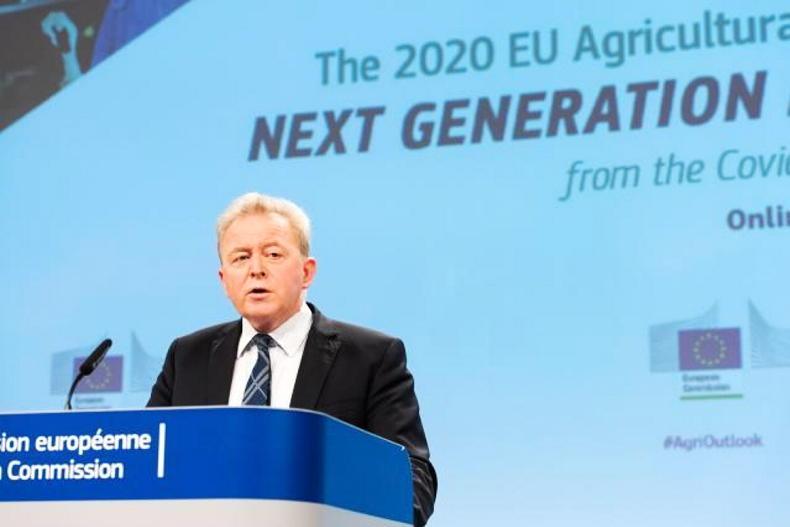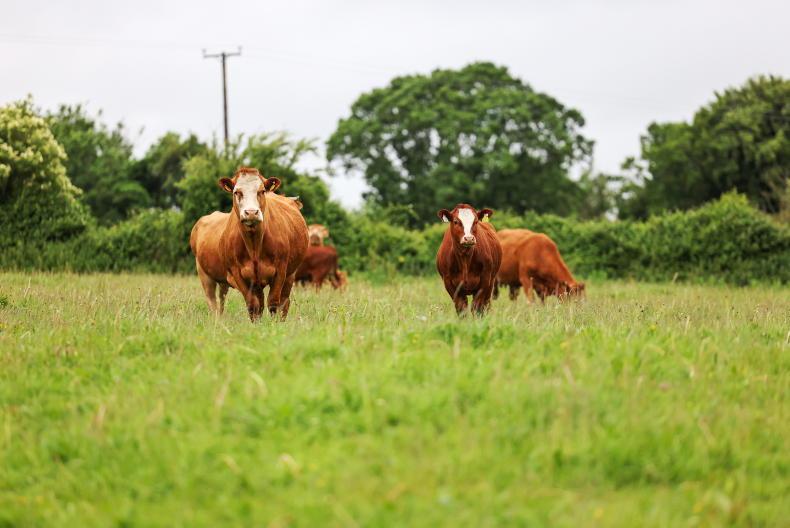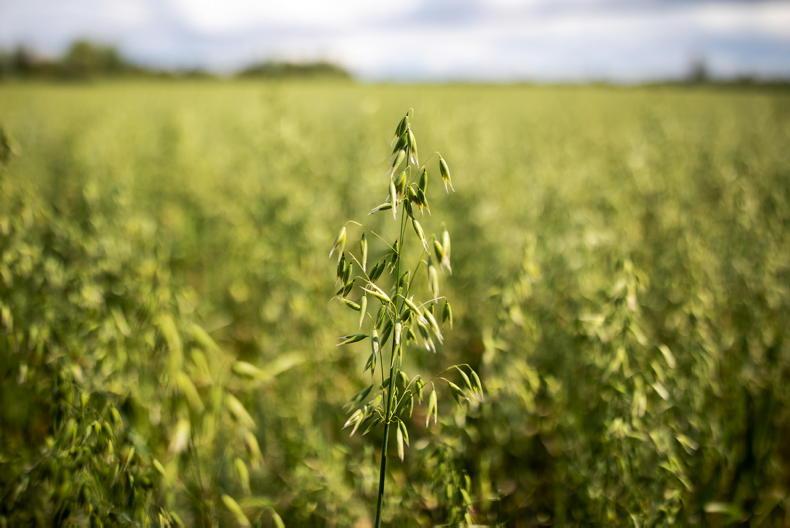Agriculture and Rural Development Commissioner Janusz Wojciechowski has set a target of at least 25% of the EU’s agricultural land being used for organic farming by 2030.
Is this possible? Will there be a market or processor capacity for this organic produce? Will there be a price premium for this product? How does Ireland Inc sit with this target as a key food producing country in the EU?
Lots of questions, now let’s try and answer some of them with the information we know and trends that have been happening for the last 20 years.
So, we are clear that the promotion of organic farming is very much up there in terms of direction of travel and when the Commissioner is coming out with strong statements and very clear targets (see box below), it means the EU political will is behind the move.
An action plan will follow that will promote organic food and stimulate demand for organic products, encourage the increase of organic farming area within the EU and enhance the role of organic production in the fight against climate change and biodiversity loss.
This year, the Commission plans to allocate a specific budget of €40m to organic farming under its promotion policy. This budget will co-finance promotional actions and information campaigns on the EU organic sector, raising awareness about its qualities and aiming to stimulate demand.
The narrative around the whole area of sustainability and environmentalism plays into the hands of the organic sector. While this is a huge positive, it could also be the weakness for the future of the organic sector and its vision for growth. The proposed new CAP is pushing ‘conventional’ farming down a greener road – perhaps this is one of the issues that could reduce the need for organic. The experts say COVID-19 and the Farm to Fork strategy have had led to further organic sector growth.
So lets tackle one of the big questions first – will the EU reach the 25% target by 2030? Latest data suggests organic farming continues to grow both in Europe and around the world.
Current projections predict that, even if we continue doing just what we are, the share of organic agriculture should, according to some sources, reach between 15% and 18% of agricultural land area by 2030. The 25% target significantly increases the EU’s ambition. So it is fair to say the 25% target is a stretch. However, given the push from the highest levels and the creation of the new CAP at a time when it is high on the agenda, it may well happen.
Member state differences
So how are EU member states reacting to this 25% target or how do they compare already?
Some EU member states are already well down the organic road. A lot of member states trade fruit and vegetables and in some countries a lot of this is organic.
The extent of organic production and consumption differs significantly between member states – the share of agricultural land under organic farming ranges from a low of 0.5% to a high of more than 25% already (see graph on P11).
Spain, France and Italy have the largest share of organic land but some of the smaller countries have a higher percentage of land converted to organic. However, the largest consumers of organic produce are in the large and wealthy population countries of Germany and France (see map). Indeed, the market growth predictions suggest that there was double-digit growth in the organic market from 2019 to 2020.
So is there a market for all this organic food and will it continue to grow? The global market for organic food reached €106bn in 2019.
The US is the leading market (€44.7bn), followed by Germany (€12.0bn) and France (€11.3bn). In 2019, many major markets continued to show strong growth rates; for example, the French market increased by more than 13%.
It is fair to say for the last 10 years the French organic sector has seen huge growth relative to the 20 years prior to that.
There are now over 23,000 organic farmers in France, using about 8.5% of the French utilisable agricultural area.
Danish and Swiss consumers spent the most on organic food (€344 and €338 per capita, respectively).
Denmark had the highest organic market share, with 12.1% of its total food market. So it’s fair to say as individual country economies improve and people become wealthier, they are willing to look at premium-branded products, and often purchases are made outside the supermarket shelf in direct sales from farmers’ markets and the like. So yes, it looks like there will be a market.
Irish organics
So is Ireland way off the pace on organics and how can it change, or will it change? Let’s take the farm sector first and then look at the market. The Department has been driving organics within the industry since 2014. Latest figures suggest there are 72,000ha in organics an increase of 50% since 2014. This is 2% of total utilisable land area farmed, a long way from the 25% stretch target.
There are over 1,700 farmers (2,200 operators), some more in conversion, who are predominantly livestock with a relatively small number in tillage, dairy and horticulture.
So yes it looks like there will be a market and its growing.
Irish market
The research suggests the total Irish organic market is worth about €200m, with double-digit growth year on year. The market research suggests the biggest barrier for consumers is higher prices.
However, the sector is growing and in Ireland most of it is supermarket spend, with vegetables, yoghurt and fruit the top three top-performing areas.
Irish farmed organic salmon has grown considerably and large quantities are exported.
So while the area has grown and continues to grow, organic production in Ireland is not really aligned to the market. Most organic farmers are beef and sheep, with lower numbers in tillage and dairy. Fruit, veg and dairy are the growth areas. While most of the organic cereal grown in Ireland is oats, it is still under-produced and imports fill the gap.
Where farmers meet the market
So one of the Irish challenges is definitely that there is an unbalanced value chain where there is not enough capacity in the market for the organic meat that we produce. Hence, you get organic meat selling as conventional product prices and farmers get disillusioned.
This poor route to market and lack of market intelligence makes for poor ambassadors and frustration at producer level. The blurring of identity and brands at the major retailers is also a weakness in the organic market.
At farm level there are technical and cost challenges that are definitely limiting at the moment, but attitudes and technical knowledge is changing with time as the dependence on artificial nitrogen and antibiotic usage drops. The shortage in availability and higher prices of organic cereals is limiting growth in Irish dairy, meat and aquaculture sectors.
The changing of the CAP and the move to more environmental schemes for all conventional farmers will definitely be a threat to the organic movement and we see this happening already in countries like the Netherlands. Here a ‘greener’ branded product – that has certain farm constraints imposed such as limits on stocking rate – is often in a much better market position and effectively undermines ‘organic’ food to an extent.
To balance the challenges, there are opportunities such as potential for increased income and lower costs.
There is a transition period to that place before a farmer can realise that opportunity.
The Irish organic dairy space is challenged fundamentally as Irish farmers are predominantly grass-based seasonal producers and any organic processors are going to want all year round supply to match market demands for fresh products such as organic yoghurt.
On the dairy market side, we see as many organic dairy products imported into Ireland in supermarkets as are produced in Ireland by Glenisk.
The tillage side is challenged by low organic crop yields and contractor challenges of separating organic product from conventional at harvesting, with imports displacing Irish products due to lack of Irish alternatives.
As of now it seems that we are likely to continue to see growth in specific areas such as aquaculture and horticulture. We may also see some growth in some of the main farming sectors, but to a smaller extent.
While commodity prices are high for dairy, beef, sheep and grains you would expect this will dampen the enthusiasm of primary producers to opt for organic conversion, for however long the higher prices will last.
The technical challenges of conversion are balanced by increased industry demand, increased awareness by consumers and a strong push from the EU in terms of funding for organic schemes etc. However, you can have all the schemes you want, but if you don’t have a working market or at the very least a balanced market, it can be a challenge for the most optimistic and enthusiastic of producers.
Growth will continue in the organic sector, but reaching 25% of Irish area by 2030 looks too far a stretch target for Ireland, given the technical challenges that exist and prices available for conventional products at the moment. On average the EU might meet the 25% target, but I wouldn’t wager the house on Ireland hitting the 25% land area target by 2030.
Agriculture and rural development Commissioner Janusz Wojciechowski said: “The Farm to Fork and Biodiversity strategies set ambitious targets for the agricultural sector to ensure it is Green Deal-ready.
“Organic farming will be a key ally in the transition that we are leading towards a more sustainable food system and a better protection of our biodiversity. The Commission will support the organic sector towards the achievement of the 25% target of agricultural land under organic farming by 2030 with the appropriate policy and legal framework. ”









SHARING OPTIONS